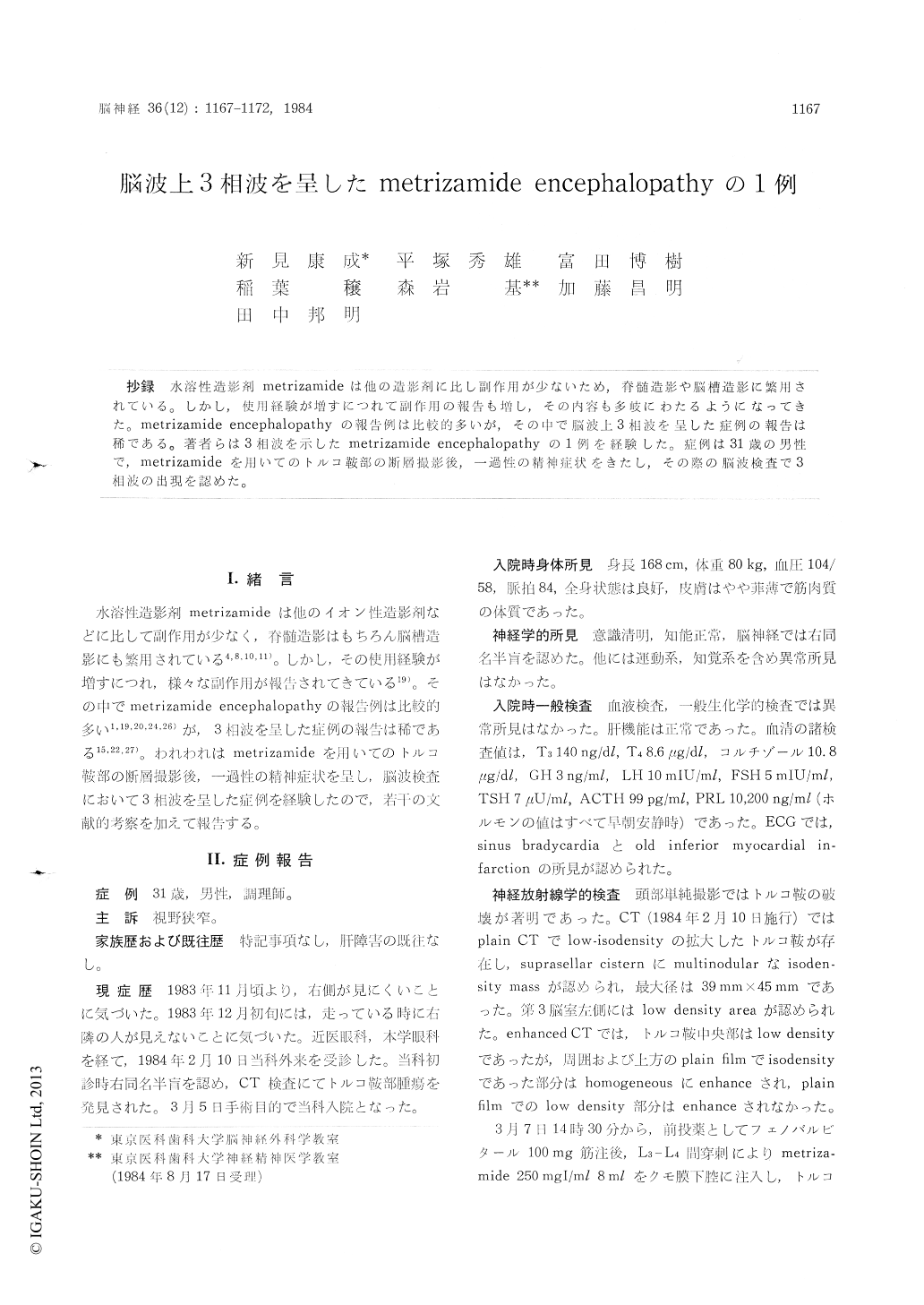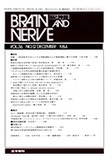Japanese
English
- 有料閲覧
- Abstract 文献概要
- 1ページ目 Look Inside
抄録 水溶性造影剤metrizamideは他の造影剤に比し副作用が少ないため,脊髄造影や脳槽造影に繁用されている。しかし,使用経験が増すにつれて副作用の報告も増し,その内容も多岐にわたるようになってきた。metrizamide encephalopathyの報告例は比較的多いが,その中で脳波上3相波を呈した症例の報告は稀である。著者らは3相波を示したmetrizamide encephalopathyの1例を経験した。症例は31歳の男牲で,metrizamideを用いてのトルコ鞍部の断層撮影後,一過性の精神症状をきたし,その際の脳波検査で3相波の出現を認めた。
Metrizamide (Amipaque), a water soluble non-ionic contrast medium has less toxic effect in com-parison with other contrast media, and it is now widely used for myelography, cisternography, ventriculography and cerebrospinal fluid dynamic imaging. However, as the number of cases in which this medium has been utilized has gradually increased, incidents of toxic manifestations have been reported. Among these, there are a consi-derable number of case reports referring to met-rizamide encephalopathy, but only a few authors reported the appearance of triphasic waves on EEG when they occurred.
The authors experienced one case of metrizamide encephalopathy accompanied by frequent appea-rance of triphasic waves on EEG. A 31-year old male was admitted to our hospital with the com-plaint of right homonymous hemianopsia. At that time he was fully conscious and mentally alert. On CT, 39mm x45mm partially enhanced isodence mass was revealed on the enlarged sella turcica. Labolatory findings showed high titer of prolactin 10200ng/ml).
Premedication of 100mg phenobarbital i. m. was followed by the tomography of the sella turcica, using 8 ml of 250mgI/ml metrizamide injected into L3-L4 subarachnoid space. Several hours after the examination, he complained of slight nausea and was kept in bed with his head placed in an elevated position.
The next morning, he was found to be in a drowsy state. He was disoriented and could not respond adequately to questions asked. His naming of daily necessities was also poor, although he knew how to use them.
Nineteen hours after the metrizamide injection, CT was performed, on which there was remark-able staining by metrizamide of the brain paren-chyma, showing diffuse hazy appearance.
Twenty hours after the metrizamide injection, EEG showed frequent occurence of triphasic waves.
The patient's mental faculties gradually returned to normal within a week after the examination. Parallel to this recovery, the effect of metrizamide on CT and EEG findings disappeared.
Because metrizamide is a 2-deoxyglucose analo-gue, it inhibits hexokinase competitively at the first stage of glycolysis of the brain tissue. This is now postulated as the mechanism of metrizamide encephalopathy.
As the prophylactic strategies of metrizamide encephalopathy, the authors propose the following :
1: anticonvalsants as premedication
2: sufficient nutrition prior to the examination
3: sufficient hydration before and after the exa-mination
4: placing the head of the patient in an elevated position
5: as small dosage of metrizamide injection as possible
In this report, authors especially emphasize the possibility that metrizamide can still be used safely with sufficient caution and countermeasures against this side effect.

Copyright © 1984, Igaku-Shoin Ltd. All rights reserved.


